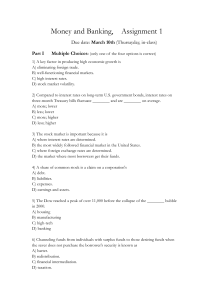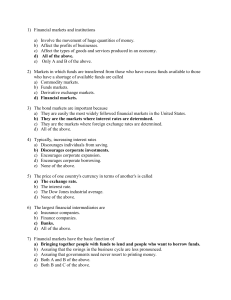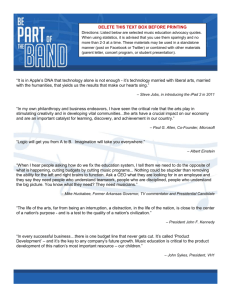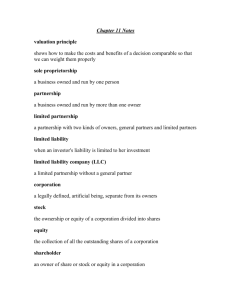MULTIPLE CHOICE. Choose the one alternative
advertisement
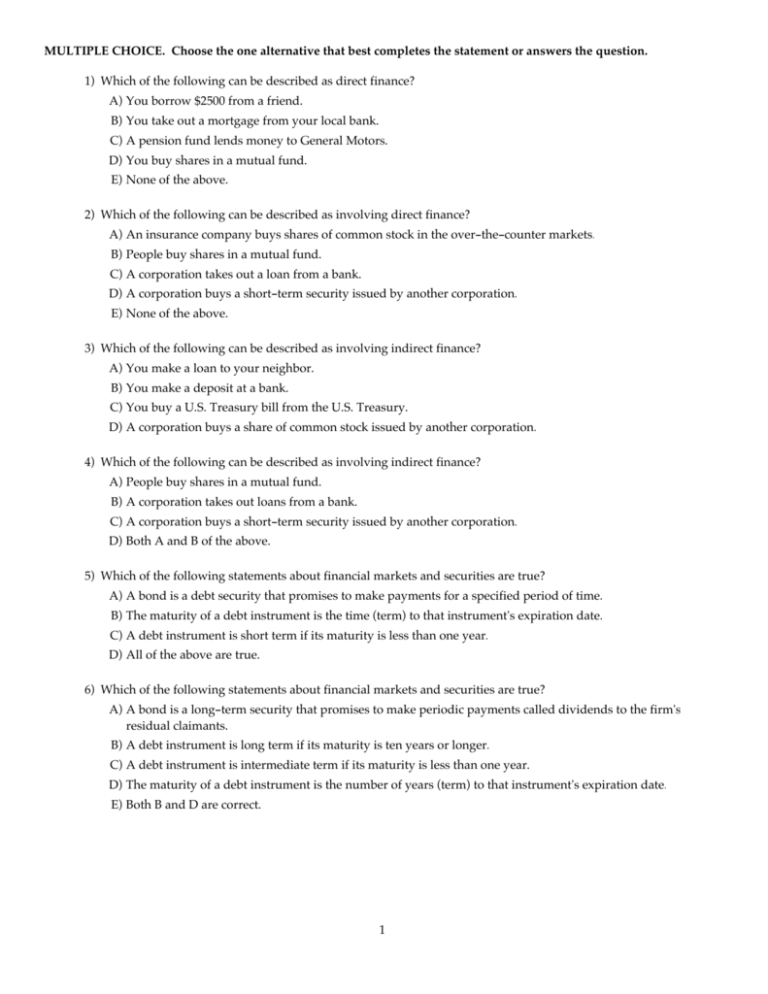
MULTIPLE CHOICE. Choose the one alternative that best completes the statement or answers the question. 1) Which of the following can be described as direct finance? A) You borrow $2500 from a friend. B) You take out a mortgage from your local bank. C) A pension fund lends money to General Motors. D) You buy shares in a mutual fund. E) None of the above. 2) Which of the following can be described as involving direct finance? A) An insurance company buys shares of common stock in the over-the-counter markets. B) People buy shares in a mutual fund. C) A corporation takes out a loan from a bank. D) A corporation buys a short-term security issued by another corporation. E) None of the above. 3) Which of the following can be described as involving indirect finance? A) You make a loan to your neighbor. B) You make a deposit at a bank. C) You buy a U.S. Treasury bill from the U.S. Treasury. D) A corporation buys a share of common stock issued by another corporation. 4) Which of the following can be described as involving indirect finance? A) People buy shares in a mutual fund. B) A corporation takes out loans from a bank. C) A corporation buys a short-term security issued by another corporation. D) Both A and B of the above. 5) Which of the following statements about financial markets and securities are true? A) A bond is a debt security that promises to make payments for a specified period of time. B) The maturity of a debt instrument is the time (term) to that instrument's expiration date. C) A debt instrument is short term if its maturity is less than one year. D) All of the above are true. 6) Which of the following statements about financial markets and securities are true? A) A bond is a long-term security that promises to make periodic payments called dividends to the firm's residual claimants. B) A debt instrument is long term if its maturity is ten years or longer. C) A debt instrument is intermediate term if its maturity is less than one year. D) The maturity of a debt instrument is the number of years (term) to that instrument's expiration date. E) Both B and D are correct. 1 7) Which of the following are secondary markets? A) The options markets B) The U.S. government bond market C) The over-the-counter stock market D) The New York Stock Exchange E) All of the above 8) Bonds that are sold in a foreign country and are denominated in a currency other than that of the country in which it is sold are known as A) country bonds. B) foreign bonds. C) Eurobonds. D) equity bonds. 9) The process of indirect finance using financial intermediaries is called A) financial intermediation. B) financial liquidation. C) disintermediation. D) resource allocation. E) direct lending. 10) Financial intermediaries lower costs by spreading them over a large number of customers, thereby taking advantage of A) risk sharing. B) asymmetric information. C) transactions costs. D) diversification. E) economies of scale. 11) A professional baseball player may be contractually restricted from skiing. The team owner includes this clause in the player's contract to protect against A) regulatory circumvention. B) adverse selection. C) moral hazard. D) risk sharing. E) fraud. 12) An example of the problem of ______ is when a corporation that uses the funds raised from selling new shares of stock to pay for Caribbean cruises for all of its employees and their families. A) prudential supervision B) moral hazard C) adverse selection D) risk sharing E) credit risk 2 13) Regulations that protect against financial panics include A) restrictions on entry. B) deposit insurance. C) restrictions on assets and activities. D) disclosure. E) all of the above. 14) The agency that was created to protect depositors after the banking panics of 1930-1933 is the A) Federal Deposit Insurance Corporation. B) Federal Reserve System. C) Treasury Department. D) Office of the Comptroller of the Currency. E) all of the above. 15) Asymmetric information is a universal problem. This would suggest that A) financial regulations differ significantly around the world. B) financial regulations are unnecessary. C) financial regulation exists only in the United States. D) financial regulations in industrial countries are an unqualified failure. E) financial regulations in industrialized nations are similar. 3 Answer Key Testname: CHAPTER 2 PQ.TST 1) 2) 3) 4) 5) 6) 7) 8) 9) 10) 11) 12) 13) 14) 15) A D B D D E E C A E C B E A E 1
